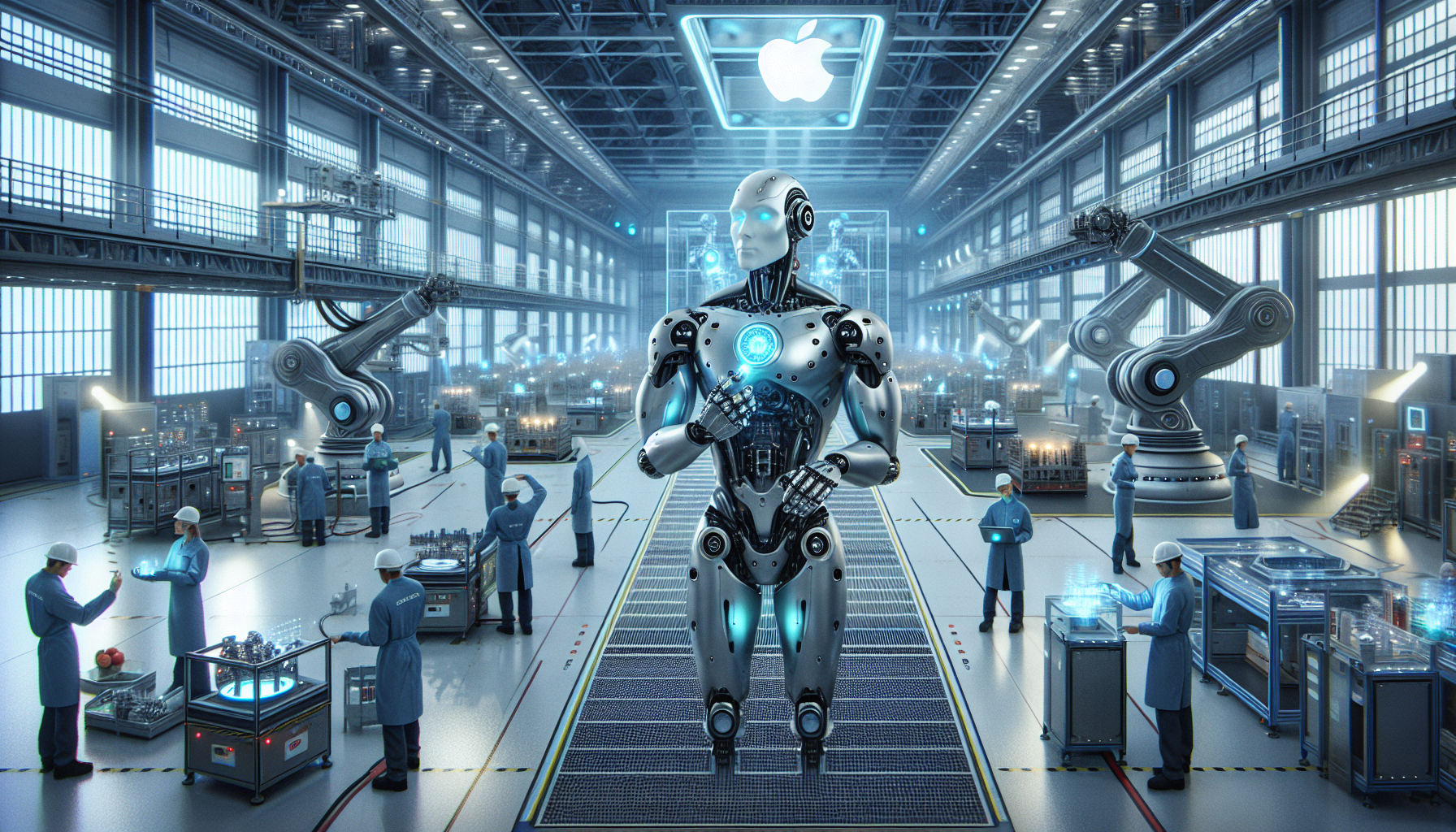
The Future of Apple Robotics: Anticipations for Apple’s Inaugural Robot
In recent times, Apple has consistently redefined innovation, crafting products that are both practical and essential. The latest excitement centers around Apple’s initial venture into robotics, a device that has the potential to transform our interaction with smart home technologies. Reports suggest that this robot is being developed in collaboration with Foxconn, a trusted manufacturing ally of Apple. Let’s explore what we currently know and how this might impact the technological landscape.
Foxconn: The Force Driving Apple’s Robotic Aspirations
Foxconn, the Taiwanese electronics giant, has been an essential player in Apple’s supply chain. Recognized for manufacturing a wide range of products from iPhones to Apple AirPods, Foxconn is now believed to be significantly involved in the creation of Apple’s debut robot. The Hongzhun facility in Taiwan, a subsidiary of Foxconn, is anticipated to be the central site for this ambitious endeavor.
During a recent investor meeting, Foxconn detailed plans for substantial investments in emerging technologies like robotics and artificial intelligence (AI). This strategic shift aligns seamlessly with Apple’s rumored intentions to unveil a robotic device that could function as a “smart home command center.” Given Foxconn’s extensive background in high-tech device manufacturing, it seems plausible that the company will take charge of assembling the mechanical components and frame of this new robot.
Insights on Apple’s Imminent Robot
Although official information remains limited, industry experts have alluded to some intriguing features for Apple’s upcoming robot. As per Bloomberg’s Mark Gurman, the device is expected to feature a substantial, iPad-like screen mounted on a slender robotic arm capable of tilting and rotating a full 360 degrees. This functionality would make it an optimal hub for FaceTime conversations, home monitoring, and smart home control.
A notable feature may be its connection to Siri, Apple’s voice-activated assistant. The robot is anticipated to identify various voices in the household, adjusting its responses and settings accordingly. This voice recognition capability could also enable a Center Stage-like experience, allowing the robot to physically turn towards the speaker, fostering a more personalized and engaging interaction.
The Influence of AI and Machine Learning on Apple’s Robot
Apple has been significantly investing in AI and machine learning, and these technologies are expected to be vital to the robot’s capabilities. The device is likely to encompass sophisticated AI algorithms that can adapt to user behavior over time, enhancing its responses and actions to best fit individual preferences.
Machine learning could also bolster the robot’s home security functionalities, allowing it to identify unusual behaviors and notify homeowners instantly. Furthermore, AI could refine the robot’s ability to coordinate various smart home gadgets, positioning it as a central hub that ensures smooth integration with other Apple devices such as iPhones, iPads, and Apple AirPods.
Possible Uses in the Smart Home Ecosystem
Apple’s robot has the potential to transform the smart home ecosystem in numerous ways. Its 360-degree rotating arm and expansive display could make it an adaptable tool for different tasks. Envision using the robot to oversee your home while you’re away, streaming live video feeds directly to your iPhone. Alternatively, think of the opportunities for remote work, where the robot could act as a virtual assistant, managing everything from video conferencing to document handling.
Moreover, the robot’s seamless integration with current Apple products could foster a more unified user experience. For example, it could automatically connect with your Bluetooth speakers or wireless earbuds, delivering audio notifications or playing music tailored to your tastes.
The Competitive Landscape: Apple’s Position
Apple is not alone in venturing into robotics. Firms like Amazon and Google have previously launched smart home devices with varying levels of robotic features. Nevertheless, Apple’s strategy appears to emphasize creating a fully integrated device leveraging its existing ecosystem of products and services.
The potential for groundbreaking innovation is significant, especially considering Apple’s ability to transform niche technologies into widespread successes. The launch of this robot could signify the dawn of a new chapter in smart home technology, where homes are not merely automated but intelligently interactive.
Conclusion
Apple’s inaugural robot may revolutionize the smart home technology landscape. With Foxconn anticipated to oversee production and Apple’s expertise in AI and machine learning, this device is set to deliver a level of functionality and integration that could differentiate it from competitor offerings. Although details are still forthcoming, the potential uses for this robot are extensive, ranging from a home security monitor to a central hub for all your smart home gadgets. As Apple continues to challenge the limits of innovation, one thing is certain: the future of robotics is promising, and it’s approaching more swiftly than anticipated.
Q&A: Frequently Asked Questions About Apple’s First Robot
Q1: When is Apple likely to unveil its first robot?
While an official launch date remains unconfirmed, industry experts speculate that Apple could roll out its first robot within the next few years, potentially as soon as 2024.
Q2: What price range can we expect for Apple’s robot?
Pricing details are still unknown, but given Apple’s trend of premium pricing, this robot is expected to be positioned as a high-end product.
Q3: What sets Apple’s robot apart from other smart home devices?
Apple’s robot is expected to feature advanced capabilities such as a 360-degree rotating arm, voice recognition, and smooth integration with other Apple products, setting it apart from current smart home offerings.
Q4: Will the robot be compatible with non-Apple smart home devices?
While the robot will likely be optimized for Apple’s ecosystem, it may offer some compatibility with non-Apple devices, particularly those supporting standard smart home protocols like Zigbee or Z-Wave.
Q5: What security concerns should be considered with Apple’s robot?
As with any smart home gadget, there are inherent security risks like hacking or unauthorized access. However, Apple is recognized for its strong security protocols, so we can expect the company to prioritize user privacy and data security.
Q6: Can the robot replace current smart home devices like security cameras or smart speakers?
While the robot could potentially substitute various devices, it is more inclined to complement existing smart home frameworks by offering additional features and enhanced capabilities.